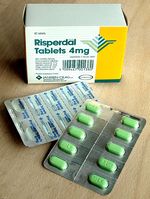
Photo from wikipedia
The work conducted in the informal sector is highly variable within and between days. Characterizing ergonomic exposures remains a challenge because of unstructured work settings and schedules. The existing ergonomic… Click to show full abstract
The work conducted in the informal sector is highly variable within and between days. Characterizing ergonomic exposures remains a challenge because of unstructured work settings and schedules. The existing ergonomic risk assessment tools have been widely used in formal work settings with a narrow range of exposure, and for predefined tasks that primarily constitute a daily routine. There is limited information in the literature on how they have been applied in informal workplaces. The aim of this study was to extend an existing risk assessment tool and to evaluate the applicability of the extended tool by assessing ergonomic exposure related to hand-made cookware operations. Eighteen hand-made cookware makers were recruited from six sites. A walkthrough risk assessment questionnaire was used to collect information on workers, tasks, work stations and workplace structures. The Rapid Upper Limb Assessment (RULA) screening tool was extended by including duration and vibration. An action priority matrix was used to guide intervention. According to the RULA action levels, the workers required investigation and changes soon, and immediate investigation and changes. The use of an action priority matrix was appropriate, and indicated that all the workers assessed were within the high to very high exposure domain and required immediate corrective measures. The methodology used proved to be an effective and reliable strategy for identifying ergonomic exposure among hand-made cookware makers.
Journal Title: International Journal of Environmental Research and Public Health
Year Published: 2021
Link to full text (if available)
Share on Social Media: Sign Up to like & get
recommendations!